Written by: Sana Shahid
Posted on: December 05, 2023 |  | 中文
| 中文
Untitled by Jamil Naqsh
In the digital age, where one is paralyzed without the internet, there exists an art form that highlights the beauty of handwritten expression. Calligraphy is the most delicate and distinctive form of Islamic art, with its brush strokes and harmonious lines, a dance of ink on paper, and a visual symphony that has made an incredible mark in the art world.
Jamil Naqsh stands among the master artists of Pakistan, who is famous globally. Born in Kairana, British India in 1939, Jamil Naqsh later migrated to Pakistan, where his artistic journey started against the backdrop of a changing world. Naqsh's early exposure to the rich heritage of Islamic calligraphy, coupled with his passion for artistic expression, laid the foundation for a career.
The exhibition ‘Modern Manuscripts’, by the late Jamil Naqsh at Tanzara Gallery is a testament that the artist lives on in the hearts of the people who are celebrating his inspiring masterpieces to date. In the eyes of the people, an artist of such caliber has a way of connecting with them through his works, helping them transcend toward divine and spiritual journeys.
Through rigorous practice for centuries, Naqsh learned various calligraphic styles with all its core principles and geometrical features of alphabets. Arabic has a lyrical aesthetic, often paired up with geometrical forms, becoming a perfect blend of linearity and curvature. What distinguishes Jamil Naqsh's calligraphic art is the seamless fusion of classical Islamic scripts with his own unique style. The artist challenged the calligraphic forms by adding modern elements, while going beyond the boundaries of different styles. Modern Manuscripts is a mixture of both - maintaining a balance between the rhythmic aspect while adding a modern touch to calligraphy without losing its essence.
Usually, calligraphy is painted onto a canvas comprised of Arabic script in dark colours, with curved or linear forms depending on either Kufic or Nastaliq scripts. Instead of following the same patterns or visuals, Naqsh added an abstract element to his manuscripts with bold and textured brushstrokes, pushing the limits of the calligraphic styles. The resulting art of abstraction captivates audiences to this day, while they try to comprehend the script written in the works.
Modern Manuscripts dates back to 1996, when Naqsh began a series of calligraphic paintings. He was completely focused and immersed in the creative process for years. It is true that an artist must experience pain in order to create art, almost like giving birth to a child. Naqsh went through the same when he would sit cross-legged all day long to produce three-dimensional artworks on a two-dimensional surface with the play of line, texture and light to depict depth and space. Naqsh is mainly known for his figurative paintings, and it is no surprise that he has treated Modern Manuscripts the same way, differentiating them from other calligraphies. The artist developed a bond between painting and geometry, a relationship between the point, line, plane and figures. He saw the geometric elements as performative, rather than stagnant, and sought to create a sense of movement that flowed through the entire canvas.
Whether it is a canvas or a board, oil paints or water colours, the consistent technique is remarkable and there is no visible difference between different mediums. This shows the command of the artist over his skills of painting, merging mediums, and balancing bold colours. Along with all this, the compositions have an expressive nature, with either intricate lines or thick shapes popping out of bright backgrounds. Let’s appreciate the artist’s mind, who has managed to make linear forms of calligraphy into more flowing, abstract and in-depth compositions. In some works, the lines seem to be carved into the boards aggressively, while others depict thick shapes and forms merged beautifully with the background.
The essence of Naqsh's calligraphic art lies not only in the technical precision of his strokes, but also in the symbolism intertwined into each composition. His work often features Quranic verses, Sufi poetry and philosophical thoughts, inviting viewers on a contemplative journey through the written word. Naqsh's calligraphy becomes a bridge between the sacred and the artistic, inviting a deeper understanding of the spiritual aspects of the Arabic language.
Over the course of his career, Jamil Naqsh's contributions have been recognized globally. His works have been exhibited in prestigious galleries and museums worldwide, from London to Dubai. Naqsh's ability to seamlessly blend the spiritual and the aesthetic has earned him acclaim, not only from the Islamic art community but also from a diverse audience. Currently, all that genius is on display in Tanzara Gallery, Islamabad. Anyone who appreciates either calligraphy or modern art should visit Modern Manuscripts until the 30th of December, and see just how powerful and gripping Jamil Naqsh’s words can be.
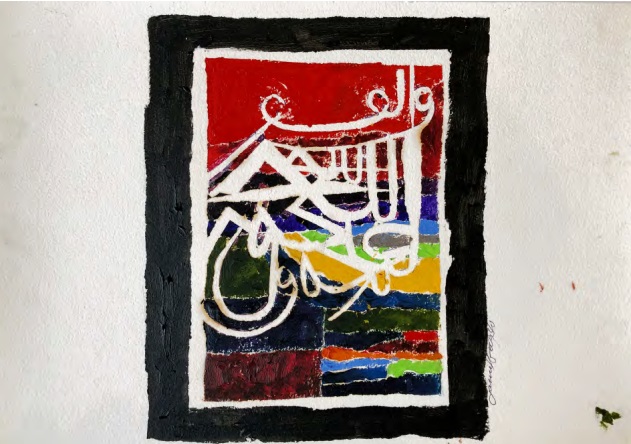
Untitled by Jamil Naqsh
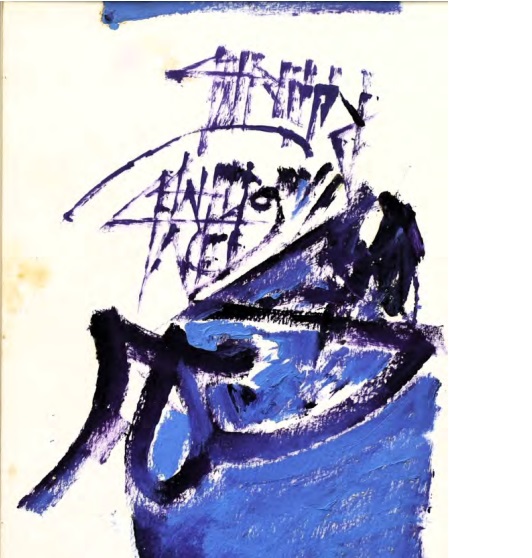
Untitled by Jamil Naqsh
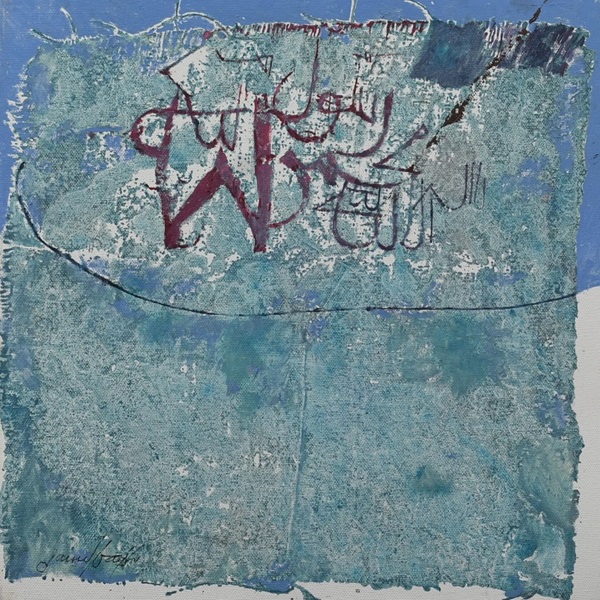
Untitled by Jamil Naqsh
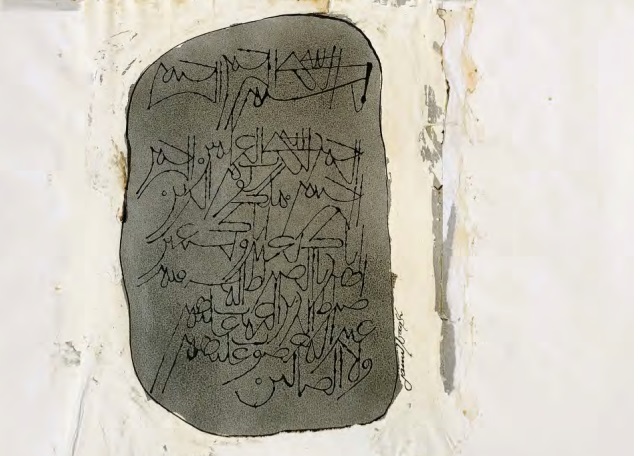
Untitled by Jamil Naqsh
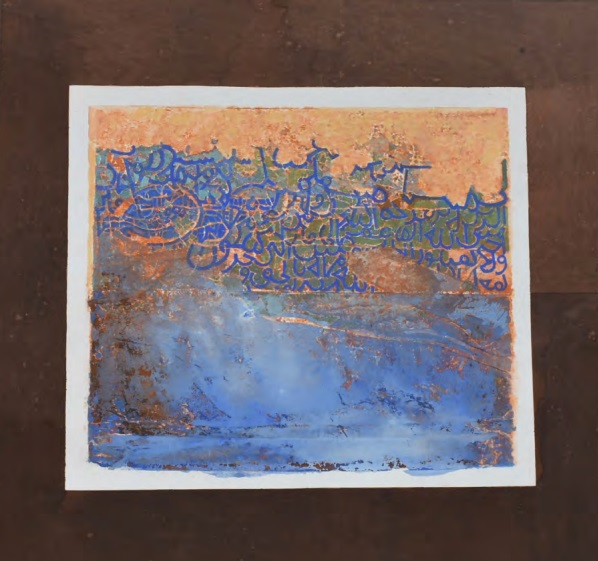
Untitled by Jamil Naqsh
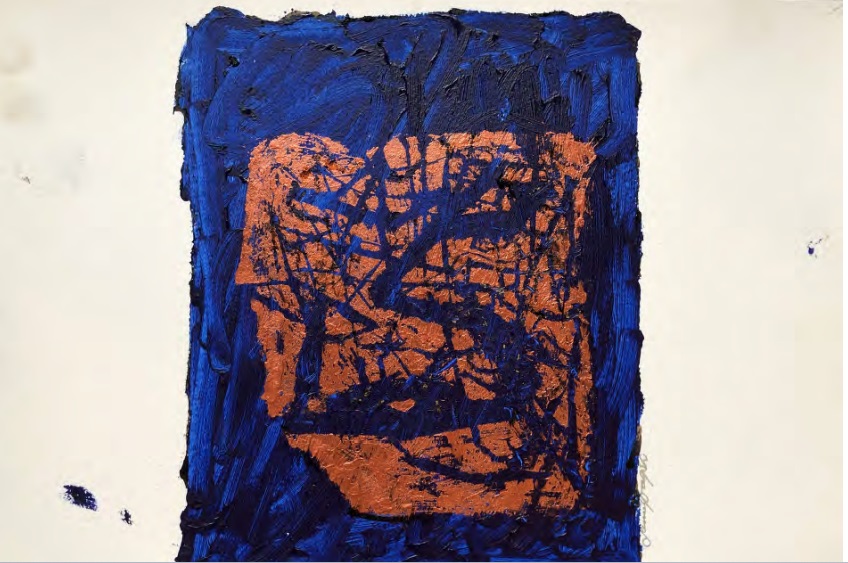
Untitled by Jamil Naqsh
You may also like: